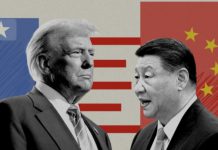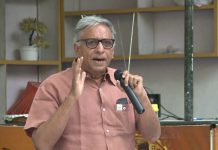By Asif Husain, Goa
The 2014 elections were held amidst an environment of extreme polarization, though the projected poll planks of the Modi Sarkar were development and good governance. In 2009 it was Shining India but in 2014 it was “Achche Din”.
We were promised the sky and dreams were sold to the youth of the country. We were reminded the exaggerated failures of the UPA government and the lack of development in the past 70 years.
Smart cities, bullet trains, elite universities, creation of 2 crore new jobs every year, 15 lakhs in each Indians account, Clean Ganga, 33% women’s reservation and many more dreams were presented before the electorate. We were told a new era would dawn upon India and India would be vibrant and a strong nation.
It was one of the costliest elections that India saw so far and with only 31 % vote share, the lowest ever for any party the Modi Sarkar was well on its way to Govern India until 2019.
With hardly twenty two months away for the next parliamentary elections, it is just about time to evaluate the past three years. What were the issues that kept the Indians busy in the past three years? Immediately after the elections were won we suddenly saw a spurt in high intensity low volume communal violence across the length and breadth of the country. We were suddenly exposed to the strident and emboldened Hindutva forces. Ghar wapsi , love jihad, hate speeches,sufi conference, fake news, triple talaq, fake encounter, vendetta politics, threats, jingoistic nationalism, students protests, national and anti-national divide, theatre nationalism, cow vigilantism, beef politics, suppression of freedom of expression, dalit atrocities and many more have kept us busy week after weeks.
Such communally polarizing issues have been continuously and deliberately thrown at us.
Our television channels, print news, assembly houses and even parliaments precious time is spend on discussing these events. Opposition parties, editors, opinion makers, prime time news anchors, social scientists, social activists and general public were kept busy with these issues discussed and debated hotly. All these issues became popular topics for “ Chai pe Charcha” .
These events and incidents were nothing but continuation of the polarization agenda started much before the 2014 elections and will continue shamelessly until 2019. It serves in polarization of the society, which is beneficial for the ruling party and secondly it helps divert everybody’s mind from the real issues confronting the country. It also keeps debates over the failures and un-kept promises of the ruling government at bay.
So for the last three years and more we have been jumping from one communal issue to another, from one event to the other and our PM from one country to another.
The core issues that challenge the Indian country are the ever increasing unemployment, deteriorating health facilities, slowing down economy, farmer suicides, crimes against women, poor educational infra- structure, rising cost of living, mal nutrition, poor relations with our immediate neighbors, failing IT sector, judicial reforms, parliamentary reforms, corruption and black money, police reforms, financial health of the nation and the banking sector along with others.
Let us in the next few lines try to evaluate the progress and the status of the promises of the Modi Sarkar in the past three years.
Unemployment:
Remember we were told that 2 crore new jobs will be created each year. Let us do some fact finding exercise. We have seen as an after effect of economic policies of the ruling government and especially the much publicized “Demonetization” a loss of 15 lakh jobs apart from job losses in Diamond and Leather industry to the tune of 20,000 each.
The 8 major sectors transport, automobile, metals, gem, jewelry, handlooms, IT, textile etc could contribute not more than 1.35 lakh in 2015. Job growth is the lowest in the last 7 years. During the UPA-2 job creation was between 4- 8 lakhs in the 5 year period but currently it is below 2 lakhs .
This is even after twisting figures from organized and service sector jobs. Vrijesh Upadhyay- secretary of the Bhartiya Majdoor Sangh says that 2.5 lakh units employing around 5-10 staffs were out of production in the quarter immediate after demonetization leading to joblessness. The much touted slogans such as digital India and make in India fall flat considering the fact that IT sector has a decline in fortunes and faced with losses in jobs.
BLACK MONEY AND ECONOMY
The 15 lakh rupees to each Indians account never came and just when people were getting restless and asking questions we were presented the “Demonetization Shock and Awe Therapy” with tall promises of checking black money, terror funding and fake notes . The ensuing difficulties faced by daily wage earners, small traders, ordinary men and women is well documented but few from the ruling party want to accept it. The objectives not achieved, the amount that came in not known, amount of fake currency not known and the RBI is still countingwith every body clueless of the exercise and its benefits.
The top secret decision to demonetize saw fake notes of 2000 in circulation at the same period. The Government so far in denial mode has finally accepted that the economy has slowed down and GDP is down to 6.1 % after demonetization.
IT sector obituary is being written, tax collection has come down and not as expected after demonetization. Business Standard a reputed business magazine estimates a daily loss of Rs 25000 crores after demonitisation. T.N Ninan’s book “ The Turnoff The Tortoise” states that by 2025 India will be the poorest large economy.
Indian textile industry is looking at Bangladesh to invest. The financial health and the Banking sector data and figures are gloomy and our banks need 2.40 lakh crore to write of the bad loans. Tighter immigrations laws have led to many job loss in the IT sector and in spite of five visits to the USA by our PM it has not changed the impact of H1B visa policy of the USA. Earning from the IT sector is falling down and Manufacturing sector has seen a growth of 1.5 % only.
EDUCATION
Any nation that does not educate its citizen is bound to fail. Government of India allocation for Sarv shiksha Abhiyan has gradually fallen down since Modi sarkar took over. UGC fund was reduced by more than 50% from 10,900 crores during Manmohan Singh to 4652 Crore in 2017-18.
The union Government spending on education as percentage of the GDP has been much below than the desired level at 3.65 % of the GDP. It was 4.7 % of GDP during the Dr. Manmohan Singh period.
Scholarships for research programs have been cut. Students protesting hike in fees in Punjab University due to cut in UGC grants were charged with Anti-National cases. The state of primary schools across India is pretty bad. Proportionate budgetary allocation for ICDS and Mid day meal scheme have been reduced. With the reduction of budget allocation the situation has gone from bad to worse. Tata Institute Of Social Science(TISS) was on the verge of closing three of its centre’s due to cut in funds and grants and was forced to ask 25 top professors to quit.
In many places teachers posts are still spending. The share of social service spending has come down from 10.2% in 2009 under UPA to 5.3 % in 2016-17 under NDA.
The vow at the Indian Science Congress at Tirupathi by the Prime Minister that by 2022 India would be a major global scientific power has not seen any increase in the science allocations. It currently hovers round 0.8 % of GDP.
HEALTH:
The manifesto ahead of the election that brought NDA to power had accorded “high priority” to the health sector and promised a universal health assurance plan. The National Health Assurance Mission program drafted by the health officials was not approved because of constraints on India’s financial resources. The plan was to provide free drugs, diagnostic services and insurance but NPPA’s authority for pricing of essential medicines was withdrawn and its guidelines set aside. NPPA’s guidelines would have reduced the price of the essential medicines by 35 % but contrarily once it was left to the markets and following discussion over breakfast in the visit to USA with CEO’s of world top pharmaceutical companies we saw 200 to300 % increase in the price essential medicines. In 2016 the excise duty exemption on the essential medicines were withdrawn.
In urban and rural India many people borrow to pay their medical expenses.30% funding of aids has been cut. A truncated health budget have ensured that “achchedin” in health sector are still elusive. The World Health Organization recommends at least 5% of GDP be spent on health sector but India spends only 1% of GDP.
Similarly if we consider the farmers plight not much has been done by the government to address their problems. Farmer suicides have not been brought under control and we have farmer protests across the length and breadth of the country . The assured promise MSP and reimbursement of 50% of cost inputs has also not been kept. Farm loan waiver responsibility that has been shifted to the states could have been better handled if the central government took up the responsibility.
The continued support to companies like Monsanto that has fooled the Indian farmers and today due to high cost of the Monsanto seeds and the required chemical fertilizers it has only left the farmers with no option but to commit suicide. The shooting of protesting farmers has added salt to their wounds. And the Pradhan Mantri Fasal Bhima Yojna scheme is programmed to benefit the insurance companies but not the farmers.The private insurance companies have made profits to the tune of 10000 crores.
Though the Prime Minister has been travelling and visiting all the countries far away to improve ties and increase business the truth is that our relation with our neighbors has become weak. Most of our neighbors have better relation with China and our neighbors do not look up to India as their Big Brother. In spite of many visits to USA we have not seen any change in the tighter immigration laws. Our relation with Pakistan was never good but at this moment our policy towards Pakistan is a confused one. We failed to take advantage of the one belt-one road (OBOR) initiative by China to revive the silk route. We were invited but we did not attend. OBOR aims to create the world’s largest platform for economic co-operation and trade , finance, culture co-ordination too.
A golden opportunity lost by India.
The NDA government has reduced spending on women’s safety and is still silent about women’s reservation bill.We find that social sector is not NDA’s favorite subject and hence it reduced allocation in education, health, women and other social sectors. By keeping opinion makers and masses occupied with irrelevant, controversial and religious confrontation they managed to shift focus from their failures.
As the time for next elections come the fear of escalated communal environment may come true but time is running fast for the NDA coalition to prove themselves. In this communally charged environment the civil society needs to assume greater responsibility to keep the agents of hate, division and fake news at bay.
















